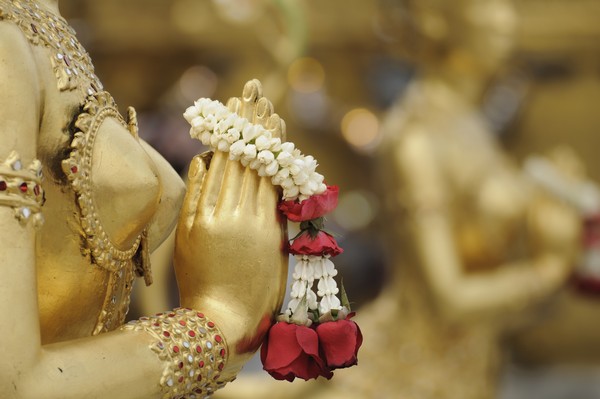
Traditionally, greeting in Thailand is “Wai” or salute which is bringing hands together to greeting. The position of the thumbs in Thai salute can differentiate the seniority of the people that we address. Generally, Thai greeting by salute is putting both hands together and point the fingers up. While the thumb that touches at any level of the upper body from the chest upwards to above the head together with a small bow. For instance, the thumbs at the chest level are greeting to a person with same age or younger and also to return a greeting. And to greet the older person, the end of the index finger is in between the eyebrows together with saying “Sawasdee”.
How to Sawasdee “Wai”
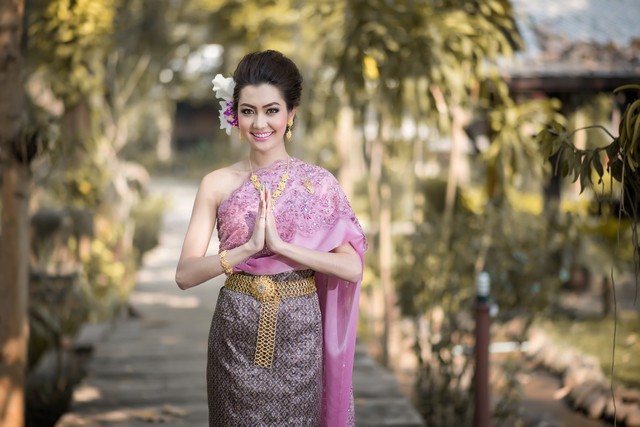
Besides, “Wai” is greeting in Thailand it also uses to apology and thanks to other people, as well. So that, Wai is an action to perform the deference, respect, and greeting. And a dialogue “Sawasdee” is not only used for the greeting just but also to bid farewell, too.
“Wai” or salute in Thai is the gesture to perform the deference, respect, and greeting by raising both hands together and salute in any level when bow to each person that different in the seniority. Further, it describes to the appreciation, apology, praise, remembrance, and many depend on the situation. Wai is the iconic action to show the friendship and cordiality which is a beautiful manner and culture of Thailand. Moreover, it presents the identity as the cultural heritage of Thais that is fading by time. Unfavourable, Thailand which is renowned as the Land of Smile among in globally is losing this significant symbol which is the typical manner of Thailand.
Mention to the salute or Wai is some boring subject for some people that think it is out-of-date or worry to do it incorrectly. In fact, having the proper manner in Thailand is not something to be right or wrong. Instead, it just about the gentleness and graciousness or not, that’s all. Thus, the direction is only the guideline for the person to take action and apply it at the right time and place. And the guideline of Wai or Thai salute by the Department of Culture determines the position of the salutation into 3 levels basis on the thumbs and face namely;
The First Level of Wai
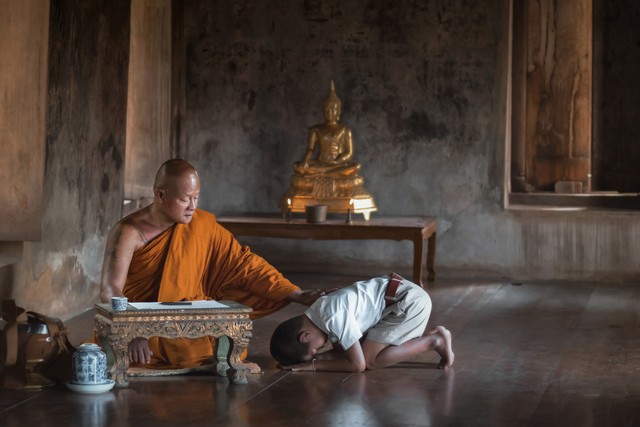
It is a salutation to the Triple Gem of Buddhism which are Buddha, Dharma, and Buddhist priest including to any ancient Buddhist remains and antique finds in case that we cannot pay respect by the “Benjangkapradit”, Thai mode of salutation using five parts of the body. The address of the first level is the thumbs is in between the eyebrows and the index finger touch at the top of the forehead. It presents that the Buddhist Triple Gem is the most esteem then it is right to pay respect by making a salutation at the highest level of the body. Or another description is the Triple Gem is the most precious gemstone which guiding and instructing the Buddhist to have the presence of mind all the time; thence it deserves for the Buddhist to make the supreme respect by this level of the salutation.
The Second Level of Wai
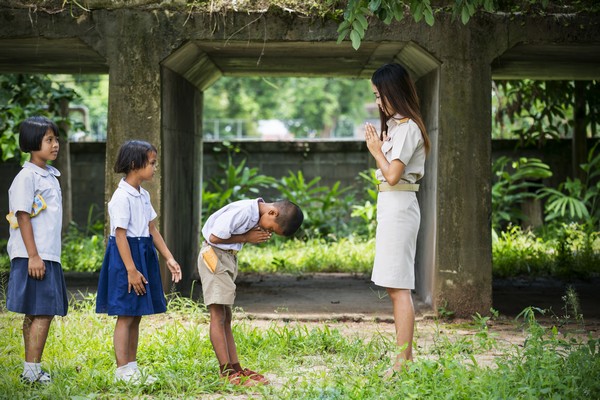
A salutation for father, mother, grandparents, teachers, and other people that we highly respect. The salute in this level is to touch the thumbs at the nose tip and the index fingers in between the eyebrows. It shows that these people are the person we must pay the most respect after the Triple Gem. Thus the position of the hand is lower. Or in other words, these people give us life and as a benefactor to us who are deserved to respect.
The Third Level of Thai Greeting
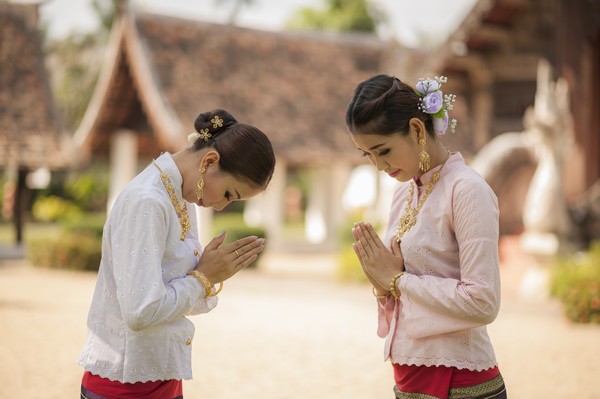
A salutation in general greeting that is not older than us a lot. And also, an address to any person with same age or friends. This salutation is the thumbs at the chin, and the index fingers touch at the nose tip means that these people we should respect after our ascendants thus the level of the salutation descending orderly. On the other word, they are the people that we shall meet and interact in general. And also, to be careful when having a conversation with these people is essential to concern, as well.
Posture of the Salutation
Apart from that, another important posture of the salutation in Thai greeting is standing. A stand-up salutation for men is stand up and bow the body together with putting palms together. The level of the thumbs is right following to the seniority of the person we make greeting. Then, lower the hands and get back to stand up post.
The stand-up salutation for the women is by step back any foot a little together with stoop down and make salute at the proper level to the person we pay respect. Then, lower the hands and move back the foot to be in the stand-up post. Otherwise, it is also right to make a salutation as same as men.
And for the salutation at the chest level is a returning of greeting which is when there is a younger person pay respect to us by the salute. It is a good manner to return the greeting to show that we pay attention to the person who pays respect or greets us and it is not embarrassed for that person, too. The salutation and returning greeting will be smoothly and finely if both parties make it at the same time. The position of the salutation at by putting palms together in between the chest means this action is right from the heart.
So, now we know about the levels of the salutation in Thai greeting that we can practice or apply to make the address when you take the trip to visit Thailand.
Presently, Thai manner about Wai or salute is a culture that is ignored by the new gen of the Thai people with many factors. However, we believe that deep inside the heart there is still the beautiful cultures, but it is because of the influence of the cultural stream from the west that dominates the teenagers to be charmed by those new lifestyles. Many units, currently, work actively to recover the beauty of Thai culture for example at the department stores or the convenient shops that the staff greet and thank the customers by Wai.









